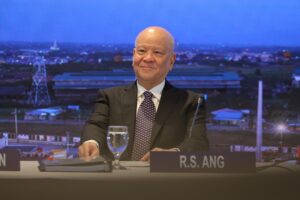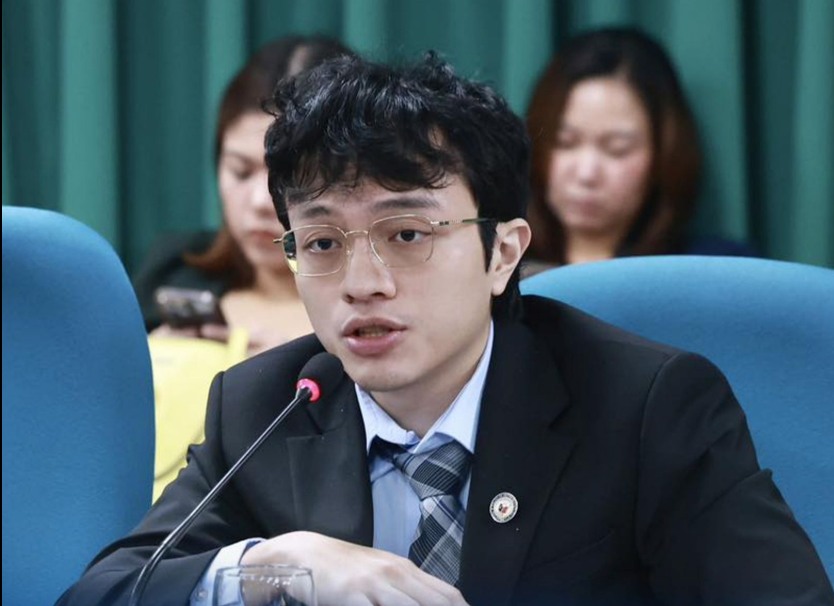By Diego Morra
Far from being regarded as the “savior” of Metro Manila from flooding, his drumbeaters, including PR operators and columnists, should take a deep breath, wean themselves away from the hype and the usual Ramon Ang overestimation of himself and his projects, with the delayed MRT-7 as a prime example of the virtue of not believing in your own propaganda.
Lately, Ramon Ang has talked to his choir about his spectacular clean-up of the Pasig River (you can bet he wasn’t able to retrieve a Japanese light tank from the waterway), something that the Belgian dredger Baggerwerken Decloedt En Zoon (BDC) was able to accomplish. Apart from immediately earning as the chief of the New NAIA Infrastructure Corp. (which operates NAIA), blessed as he was of the huge increases of passenger service charges (PSCs) the day its contract started, with nary a whimper from the Marcos Jr. administration, the justification is that the rate increases were even generous, arguing that the inflation rate since 2000 was so large that terminal fees should actually be doubled. So, the argument is that the P950 terminal fee makes Ramon Ang a good Samaritan even when he is not entitled to recoup losses from inflation, when he had zero role at the airport.
Pray, tell us, who authorized him to raise terminal fees and other charges as he saw fit? If that anomaly were allowed by the NNIC deal, then Mr. Ang could be assailed for unjust enrichment. Ano ang pinagkaiba ng panininingil ng sobra-sobra sa pamemera sa ghost, substandard and incomplete flood control projects? But then, Mr. Ang gave the best ratio money can buy as he swore to pay the Philippine government more than 80% of the revenues from the NAIA. Why the “excessive” government share? Mr. Ang’s curt reply: Give the government its due. Laudable, indeed, only that the government won’t earn a single red cent from the PSCs, which becomes the source of cash beyond the state’s oversight.
However, Mr. Ang is an operator and he has his old boy network to praise him for doing a good turn daily. Unlike the late Danding Cojuangco, his original boss who was armed with the discreet charm of the bourgeoisie and the persuasiveness of a voracious ChocNut eater, Ang speaks with a torturous monotone and apparently rehearses his addresses at the SMC’s version of Resolute Desk. On Oct. 2, 2025, Gulf News carried an article by Jay Hilotin which tackled Mr. Ang’s very idea of dredging major Laguna river systems, not the 24 waterways that drain into the Laguna de Bay, which has already become shallow, with an average depth of 2.5 meters (in the 19th century, its average depth was 30 meters) and its water so bad it cannot be the source of potable water as industrial effluents, silt, mercury, cadmium and other toxic chemicals are killing the entire lake.
Mr. Ang was also the genius who conceived of having an expressway snake through the Pasig River, competing with the barges, boats that still ply the route, until the idea bombed. Retrieving silt from the Pasig is not a bad idea, particularly since BDC earlier dredged the river and drew up significant approaches in reducing the volume of soil, sand, trash and kitchen waste that drain into Laguna de Bay. Has he ever heard the idea of silt traps? The holes dug deep to hold the silt that would have accumulated in the very shallow Laguna de Bay? A total of 24 such silt traps were planned. How many were dug? Zilch. Now, Mr. Ang wants your silt, your trash, your whatever, since he has vowed to stop the floods from swallowing the National Capital Region. (NCR.)
Cutting through the jibber-jabber of his presentations, Mr. Ang wants to prove that he cares for a cleaner and greener environment, which is why his Aerotropolis in Bulakan, Bulacan is listed as the beneficiary of the 5,000-hectare seabed quarrying contract for VIL Mines covering the offshore areas of Rosario, Tanza, Ternate and Naic towns in Cavite. The dredger is Boskalis and destination of the marine sediment is the New Manila International Airport (NMIA) in Bulakan, Bulacan. Mr. Ang joins the giants of reclamation in Manila Bay in trawling the seabed and wrecking the marine environment in the process. The Philippine Reclamation Authority (PRA) is also listed as enjoying a 5,000-hectare seabed concession in Naic, Tanza, Ternate and Rosario, with the contracted transporter as the China Harbour Engineering Co. Boskalis is the dredger and the beneficiary will be the 265-hectare reclamation project of the Pasay City government and a Davao City corporation.
Avalar Mining Corp. also secured two parcels for seabed quarrying. Parcel 1 covers 1,651 hectares and Parcel 2 has 3,159 hectares for a total of 4,810 hectares, all of them in the municipal waters of Cavite City and in the towns of Noveleta and Rosario. The marine sediment collected will be disposed of at the Pasay 360 reclamation project of the SM Group to expand the already vast Mall of Asia commercial center. The Horizon Manila reclamation project partnered with Seabed Resources, Inc. to scoop up the marine sediments in 4,999 hectares off Naic and Ternate. Silverquerst Mining Resources, Inc. is also quarrying in 2,124.3581 hectares in Naic and Ternate for the benefit of the Manila Waterfront City reclamation project of William Gatchalian, the father of Sen. Sherwin Gatchalian, who has partnered with a Chinese dredger, to the consternation of US Embassy officials. All told, these seabed quarrying operations, which fishermen have opposed, cover 21,933.3581 hectares.
More than four years ago, just as he was tooting his horn about the environmental protection of Bulakan, Bulacan, the site of what would be Mr. Ang’s Aerotropolis and New Manila International Airport (NMIA), the SMC head honcho discussed how his company planted mangrove species to replace those that had been removed. Mr. Ang’s environmental warriors planted Rhizophora varieties in the seaward zone of coastal areas in Bulacan. SMC made a big splash about this corporate activity, only for the Advocates of Science and Technology for the People (Agham) to protest and explain that Rhizophora varieties like bakawan thrive further inland. Agham stressed that the dominant native mangrove species in the seaward zones of Bulacan are from the Sonneratia and Avicennia genera, known locally as pagatpat and piapi, respectively. Moreover, Agham said planting the wrong species in the wrong zone can harm the ecosystem as it could damage the natural breathing roots (pneumatophores) of the native mangroves. SMC planted the propagules too close to each other, thus inhibiting proper growth. A little learning is really a dangerous thing.




